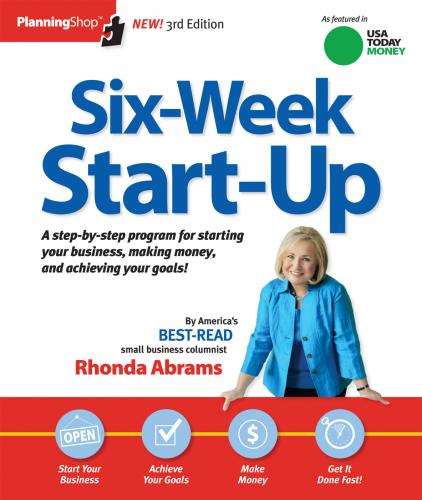Years ago, I turned to an SBDC for assistance in doing a trademark search (this was before the Internet made it easy to do a first-level search). The SBDC staff was helpful, supportive, and encouraging. SBDC counselors can assist you not only as you start your business, but as you grow your business as well.
I highly recommend checking out your local SBDC sooner rather than later. You can find a link to a list of SBDCs online or check your local White Pages listings. Set up an appointment with a counselor to discuss your business and business research, and for ongoing guidance as your business grows.
Check It Out
Start here to find your local Small Business Development Center office. www.asbdc-us.org
ACCOMPLISHMENT #2:
Create your company identity
My Checklist:
Choose a name
Check out trademarks
Secure a domain name
Consider logos, taglines, and colors
Get a graphic designer
Right from Week One, you’re going to be eager to begin working on one of the most challenging and creative aspects of starting your own business—developing your company identity: name, image, logo, tagline, and so on.
Coming up with a company identity can be fun, creative, and exciting. But if you’re not careful, it can also paralyze you. You may think that finding just the right name or logo is absolutely critical for success.
Please don’t let this process overwhelm you. While choosing the right name and image for your company is important, it doesn’t determine your company’s future. After all, not many people would consider names such as “Microsoft,” “Safeway,” or the “Walt Disney Company” as being particularly inspired or critical to the company’s eventual success.
Nevertheless, creating your company identity certainly is an important part of getting your business under way. Your corporate identity helps customers remember you, understand what you do, and even develop a certain feeling about you. Your company name and logo make your business feel “real,” both to you and to potential customers, suppliers, and others. Your identity is your brand image.
The key elements to a corporate identity are:
In addition, you might have other unique, distinguishing elements that make up your identity, such as clever or unusual packaging.
Once you’ve developed a certain identity, you’ll use those elements consistently and repeatedly—on your business cards, stationery, signs, advertising, vehicles, uniforms, and website.
Creating an identity can be done very inexpensively or cost thousands of dollars. You may want to use the services of a graphic designer to help you create your logo and other aspects of your company’s image.
I collect cute business names: “All You Knead” (a bakery), “The Barking Lot” (a dog groomer), “Shear Ecstasy” (a hair salon). A clever business name can be an excellent marketing tool—helping make your company memorable—but coming up with a good name can seem frustrating. Big companies spend thousands of dollars researching names, and sometimes even they fail.
In small companies, you are the brand, and usually the best name for your company is your own, perhaps adding a descriptive phrase to clarify what you do. My first business was called “Abrams Business Strategies” since I developed business and marketing plans.
If you plan on growing your business substantially though, you may not want to use your own name, or any person’s name. Having a name closely associated with the owner may later make a company harder to sell and can create expectations among customers that they will be getting personal attention from the owner.
BUSINESS NAME COMPARISON CHART
A good company name achieves several goals:
